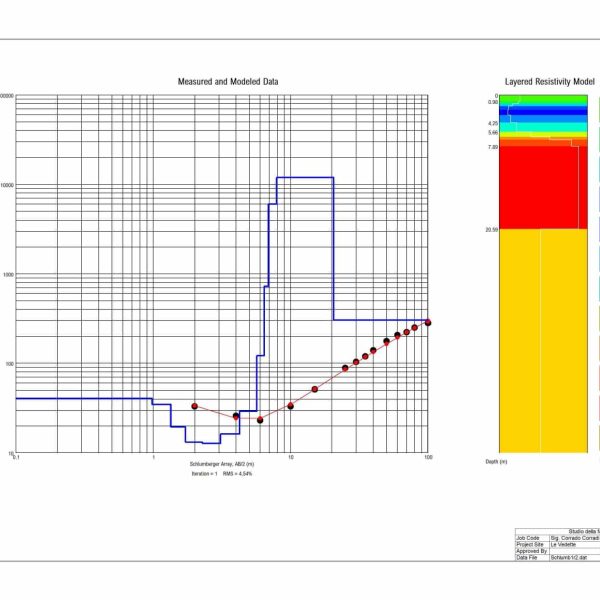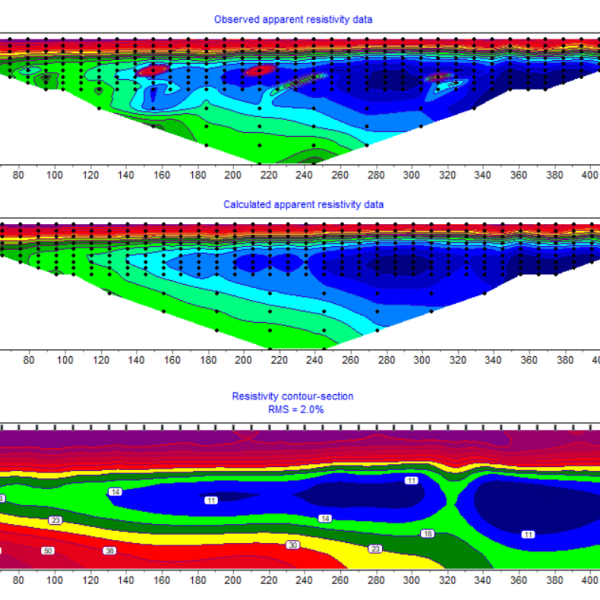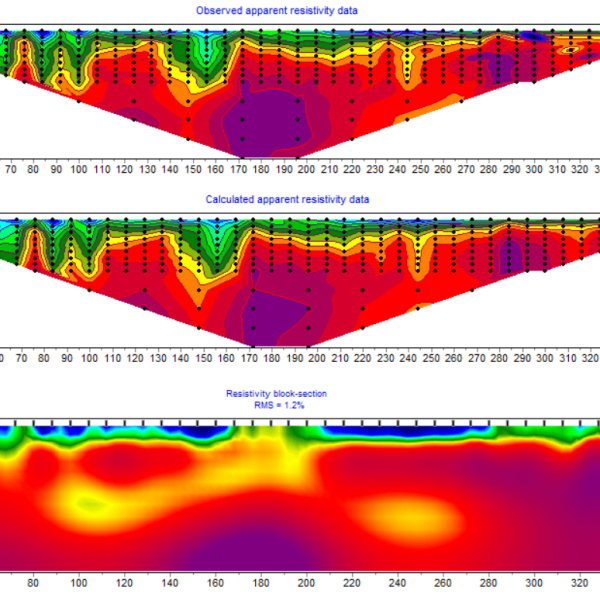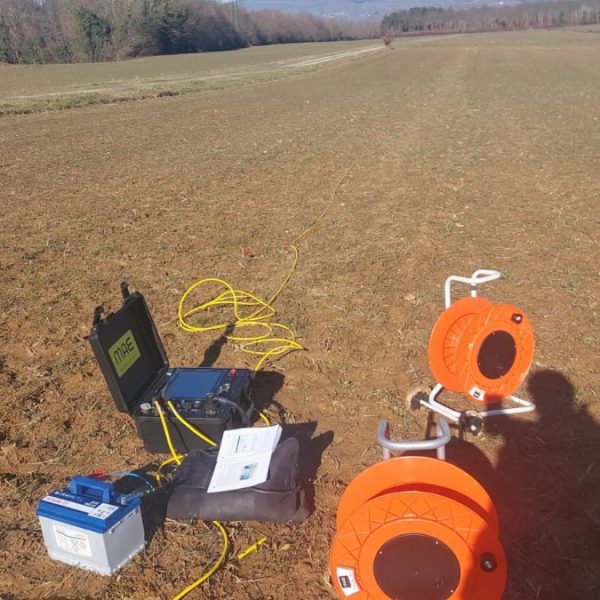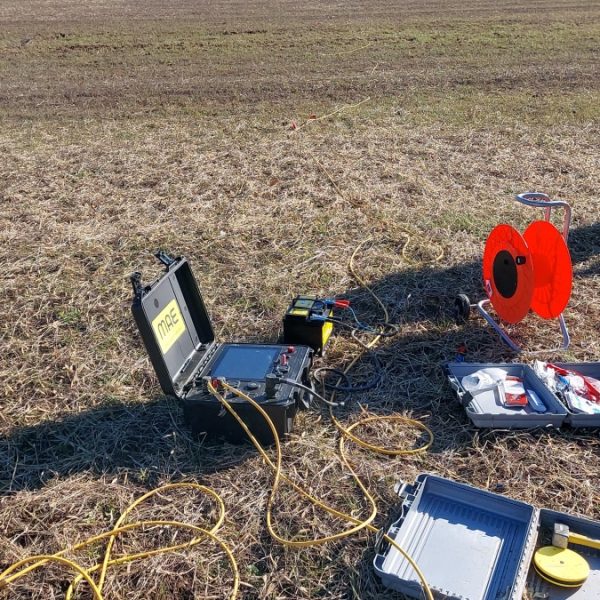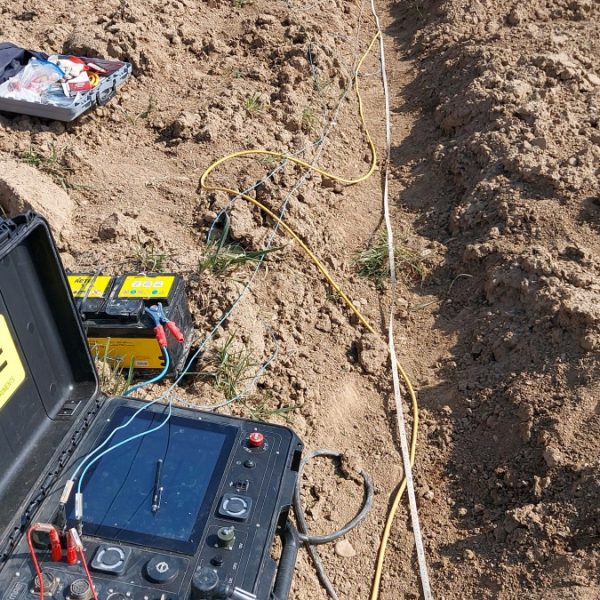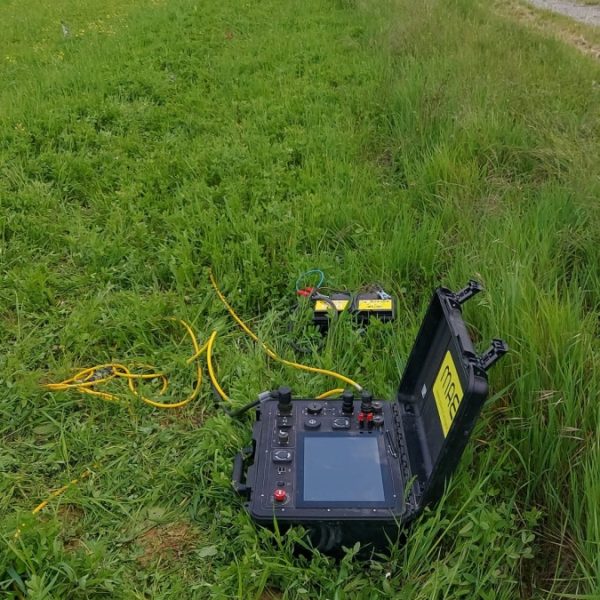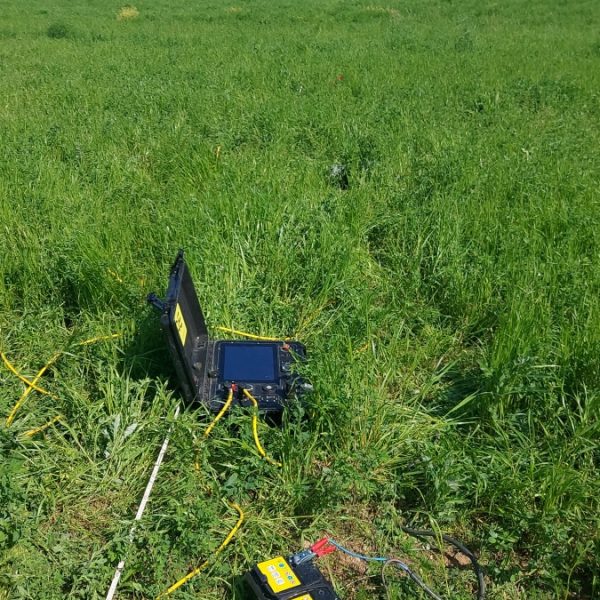Geoelectrical surveys
Geoelectrical surveys
Geoelectric surveys represent a modern non-invasive geophysical survey methodology and are based on the detection of electrical resistivity of the various types of land investigated.
They are useful for locating critical points for exploratory surveys, avoiding drilling in insignificant areas.
The test is carried out by placing a large number of electrodes on the ground connected to an instrument called a Georesistivimeter, capable of acquiring thousands of measurements which, suitably processed using relative processing software (EarthImager 1D, Zond2D, ErtLab), allow the reconstruction of the subsoil with a detail unimaginable until recently.
The instrumentation used (MAE X612EM+ GEORESISTIVIMETER) allows to perform the measurements of electrical resistivity, chargeability (or induced potential) and spontaneous potential.
The resistivity measurement method is to inject a continuous current I, using optimal geometries (Arrays) according to the geological conditions, the depth of investigation and the sensitivity. Sensitivity is an index of how much a change in the resistivity of a portion of the subsoil affects the measurements performed with a certain array.
The loadability tests can be performed at the same time as the resistivity tests and represent the aptitude of a specific material to accumulate electric charges (capacitive effect) during the introduction of current and to release them immediately after the interruption of the current itself.
Spontaneous potential measurements, performed with non-polarizable electrodes, make it possible to evaluate the ability of a soil to become electrically charged without the supply of electric current.
Services
- 2D electrical tomography
- 3D electrical tomography
- Electrical vertical SEV and horizontal SEO surveys
- Electric cross-holes
- Induced polarization
- Spontaneous potentials
Equipments
- MAE X612EM+ 48-channel georesistivimeter
- Cables no. 4 reels of 12 takeouts each, 10 meters apart
Applications
- Studies for the search for water
- Modeling of aquifers
- Groundwater vulnerability studies
- Mapping of soil permeability
- Monitoring marine ingress into the groundwater
- Two-dimensional analysis of the subsoil
- Control of damaged buildings
Identification of alluvial successions
- Studies for environmental reclamation
- Evaluation and extension of buried waste and/or anthropic elements
- Archaeological research pedological studies.

